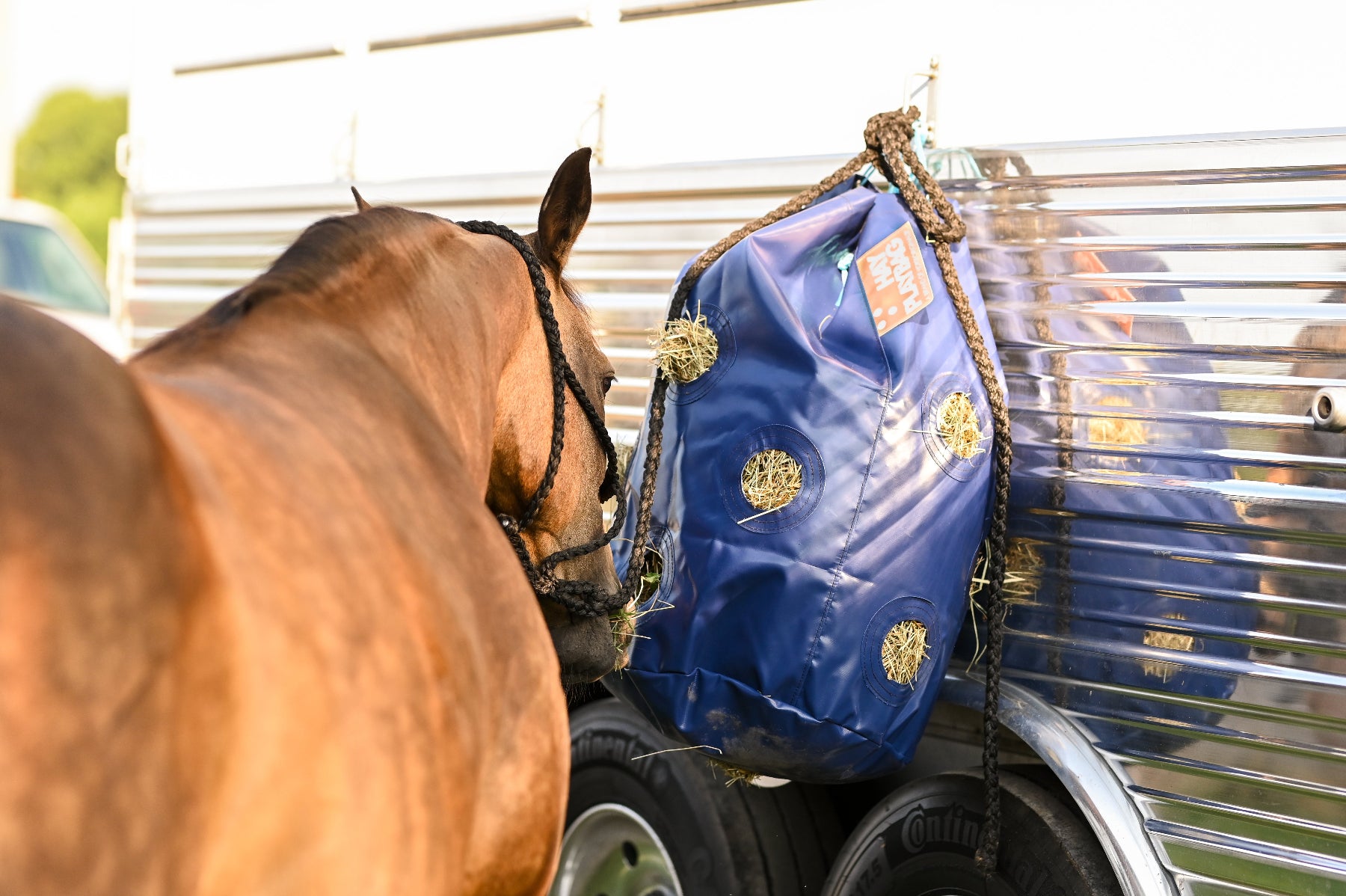Tapering Grazing Muzzle Use
Transitioning a Horse into or out of their Grazing Muzzle
Spring through Fall - in the Northern Hemisphere, roughly March through September - is the traditional season for grazing muzzle use. In the Southern Hemisphere, it's roughly the opposite. No matter where you are, at some point, grass tends to die back or stop growing as aggressively as it does during warmer, wetter months.
How do you transition your horse from constant muzzle use to a main diet of hay or feed? Or perhaps you and your horse have moved from a hot climate to a cooler one and you need to taper or wind down your horse's muzzle use.
Of course, the sugar content of grass also varies - spiking and waning - with the temperature, so there are a number of factors to consider when tapering muzzle usage or transitioning your horse off their muzzle at the end of the season or acclimating them to it at the start of the season.

Kara Musgrave has a couple of horses who wear grazing muzzles for a variety of reasons. She has developed a routine for tapering muzzle use, depending on why a horse is wearing one in the first place.
- Metabolic or Medical Issues
If you are muzzling for a metabolic or medical issue, please consult your vet before changing their routine. Most of the advice we offer here is drawn on our experience in the Southeastern United States.
Different climates and different regions have different prevailing weather conditions and other factors which can affect the grass your horses eat. Consult your local veterinarian or equine nutritionist for how these factors can affect horses where you live.
- Maintaining a Healthy Weight
If you are tapering their muzzle to maintain their current weight at the end of the season, the ideal way to do it is to begin with an hour or two of grazing during a low-sugar time of day (see "Scheduled Grazing" below) and slowly add on an additional hour each day.
Monitoring Digestion and Weight
During any change in muzzle usage, you should monitor that your horse's digestion and weight don’t fluctuate too much. Digestive health can be tracked by monitoring a horse's fecal output and consistency. The shape and color of your horse's feces can be a good indicator. Diarrhea, for example, can mean they are getting too much sugar from grass, or simply too much grass. Monitor their weight with a weight tape. If there you notice is a change in attitude or digestion, consult a vet.
Gradually adding on an hour or two to your horses time without a muzzle may not be feasible for every owner. Many people start using their muzzle 24/7 with no tapering and stop using it the same way with no issues. However it is good to be mindful.
One great option is to move to an every-other-day on-off schedule or one-day-off, two-days-on routine and see how that goes. Make sure you are monitoring both the horse's weight and digestion and let your horse's condition determine how you proceed from there.

Scheduled Grazing
If you have the option, the best time to allow your horse to graze without the muzzle is during times when the sugar content is lowest.
-
Low-Sugar Times:
- In tall, mature, longer-stem grasses that are 6 inches tall or higher
- From about three hours after sunset up until about three hours after sunrise. Photosynthesis activates sugar, so very first thing in the morning is a great time to start.
- In dormant grasses that have been through multiple frosts in the Fall/Autumn -
High-Sugar Times:
- Sugar content is highest in the bottom 4 inches of grass. Short, stubby grass can actually be some of the most dangerous for horses with a metabolic issue.
- A rule of thumb for both good pasture maintenance and horse health is to leave the bottom 3-4 inches to the earth and anything above that goes to the horses.
- During photosynthesis: from about three hours after sunrise until about three hours after sunset, especially after a good rain the previous day, or if the field has just been mowed.
- Just after the first frost in the fall or a late frost in the spring.
Stressed grass tends to have a higher sugar content than mature healthy grass So keep that in mind when tapering your horses muzzle usage. The good news is your muzzle is here to help get your horse through the times when the sugar content is not ideal!
If you have questions about tapering grazing muzzle usage, or transitioning your horse onto or off their grazing muzzle, get in touch with us at support@gg-equine.com!
------



